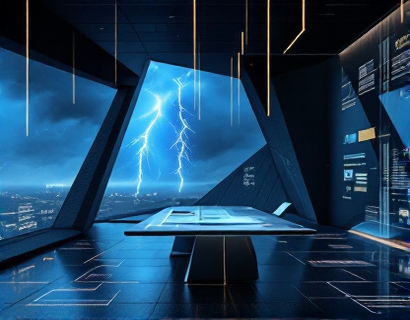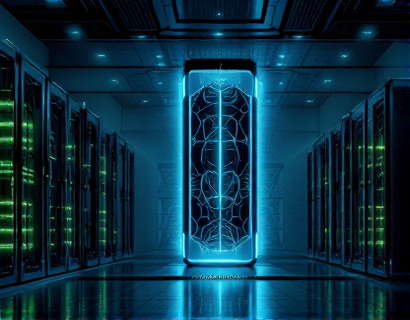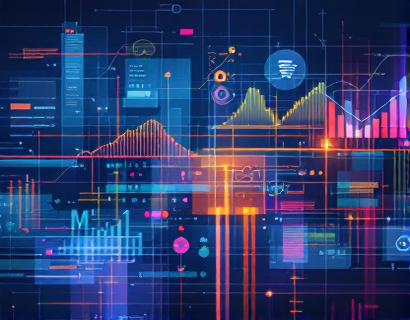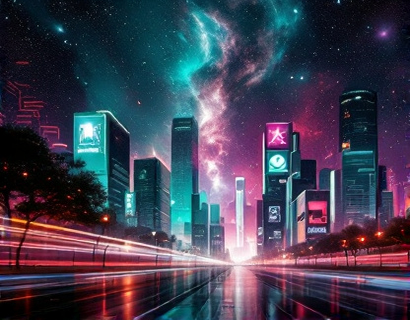Empowering Digital Creators and Collectors in the New Era of Ownership
The advent of Non-Fungible Tokens, or NFTs, has ushered in a revolutionary era for digital creators and collectors. This new paradigm redefines the concepts of ownership, scarcity, and value in the digital realm, offering unprecedented opportunities for those involved in the creation and collection of unique digital assets. This article delves into the transformative impact of NFTs, exploring how they are empowering creators and collectors, and revolutionizing the way we think about digital ownership.
Understanding NFTs
At their core, NFTs are unique digital tokens stored on a blockchain, a decentralized digital ledger that ensures transparency, security, and immutability. Unlike cryptocurrencies like Bitcoin or Ethereum, which are fungible and interchangeable, NFTs represent one-of-a-kind items, such as art, music, videos, and other forms of digital content. This uniqueness is what makes NFTs so valuable, as each token is verifiably distinct and cannot be replicated.
The technology behind NFTs leverages blockchain to create a tamper-proof record of ownership and provenance. This means that the history of an NFT, including its creation, previous owners, and transactions, is transparently documented and accessible to all. This level of transparency builds trust within the digital marketplace, ensuring that creators and collectors can confidently engage in transactions.
Empowering Digital Creators
For digital creators, NFTs offer a new avenue to monetize their work and establish a direct connection with their audience. Traditional digital content has faced challenges in terms of monetization, as it can be easily replicated and distributed without the creator's consent. NFTs change this dynamic by allowing creators to sell their digital works as unique, verifiable assets.
One of the key benefits for creators is the ability to earn royalties from secondary sales. When an NFT changes hands, the original creator receives a predefined percentage of the sale price, ensuring ongoing revenue streams. This feature incentivizes creators to produce high-quality content, knowing they will benefit from its popularity over time.
Moreover, NFTs enable creators to build and maintain a loyal community around their work. By engaging with collectors and fans on blockchain-based platforms, creators can foster a sense of belonging and exclusivity. This community engagement not only enhances the value of their NFTs but also provides valuable feedback and insights for future projects.
Enhancing Collector Experiences
Collectors, on the other hand, find NFTs to be an exciting and innovative way to own and showcase unique digital assets. The scarcity and authenticity guaranteed by blockchain technology make NFTs highly desirable collectibles. Unlike traditional art, which can be physically damaged or lost, NFTs ensure that the digital asset remains intact and verifiable for generations to come.
Collectors can curate their digital collections with the same passion and care as physical ones, knowing that each piece is unique and securely owned. The ability to display and share NFTs on social media and dedicated platforms also adds a new dimension to the collecting experience, allowing enthusiasts to showcase their holdings and connect with like-minded individuals.
Furthermore, the liquidity provided by NFT markets enables collectors to buy, sell, and trade their assets with ease. This fluid market dynamics ensures that collectors can adapt to changing interests and market conditions, making NFT collecting a dynamic and engaging hobby.
Building a Vibrant Community
The NFT ecosystem is not just about individual transactions; it is about fostering a vibrant community of creators, collectors, and enthusiasts. Blockchain-based platforms serve as hubs where users can interact, collaborate, and share ideas. These communities play a crucial role in driving innovation and growth within the NFT space.
For creators, being part of a community provides access to a wealth of resources, including mentorship, feedback, and networking opportunities. Emerging artists can gain visibility and support from more established figures, helping to level the playing field and encourage diversity in the creative landscape.
Collectors benefit from a rich ecosystem of forums, galleries, and events where they can learn about new trends, discover hidden gems, and participate in discussions about the future of digital ownership. This sense of community enhances the overall experience, making NFT collecting not just a solitary activity but a social and cultural phenomenon.
Redefining Digital Ownership and Scarcity
One of the most profound impacts of NFTs is their ability to redefine digital ownership and scarcity. In the traditional digital world, content is often seen as infinite and easily reproducible, leading to a devaluation of digital assets. NFTs flip this script by introducing scarcity into the digital realm, making unique digital items valuable and collectible.
This shift in perception has significant implications for creators and collectors. Creators can now assign true value to their digital works, knowing that each NFT represents a unique piece of ownership. Collectors, in turn, can invest in digital assets with the confidence that their ownership is recognized and protected.
The concept of scarcity also opens up new possibilities for limited edition releases and exclusive content. Creators can launch special NFT drops, offering collectors rare and unique items that command high attention and value. This strategy not only generates buzz and excitement but also creates a sense of urgency and exclusivity around certain releases.
Innovative Applications and Use Cases
The potential applications of NFTs extend far beyond art and collectibles. In the music industry, NFTs are being used to represent exclusive tracks, behind-the-scenes content, and even virtual concert experiences. Artists can sell their music as NFTs, ensuring they receive fair compensation for their work and creating new revenue streams.
In gaming, NFTs are transforming the way in-game assets are owned and traded. Players can purchase, sell, and collect unique digital items, such as characters, weapons, and virtual real estate, with the assurance of ownership and scarcity. This not only enhances the gaming experience but also opens up new monetization opportunities for game developers.
The real estate sector is another area where NFTs are making waves. Virtual property and land can be represented as NFTs, allowing for the creation of digital real estate markets. This concept has the potential to revolutionize how we think about property ownership and investment in the digital world.
Challenges and Considerations
While the potential of NFTs is vast, there are several challenges and considerations that need to be addressed. One of the primary concerns is the environmental impact of blockchain technology, particularly proof-of-work blockchains like Ethereum. The high energy consumption associated with mining can be a significant drawback, prompting the industry to explore more sustainable alternatives like proof-of-stake mechanisms.
Another challenge is the regulatory landscape. As NFTs gain mainstream attention, governments and regulatory bodies are beginning to take notice, leading to calls for clearer guidelines and protections for users. Creators and collectors must stay informed about these developments to navigate the legal aspects of NFT transactions.
Security is also a critical concern. While blockchain technology is secure, the platforms and wallets used to store and manage NFTs can be vulnerable to hacks and fraud. Users must adopt best practices for security, such as using secure wallets, enabling two-factor authentication, and being cautious of phishing attempts.
The Future of NFTs
As the NFT ecosystem continues to evolve, we can expect to see even more innovative applications and use cases. The integration of NFTs with other technologies, such as augmented reality (AR) and virtual reality (VR), will create immersive experiences that blur the lines between the physical and digital worlds.
Interoperability between different blockchain platforms will also enhance the NFT experience, allowing users to seamlessly move their assets across various ecosystems. This will foster a more connected and fluid digital marketplace, benefiting both creators and collectors.
Education and accessibility will be key to the widespread adoption of NFTs. As more people become familiar with blockchain technology and digital assets, the barrier to entry will lower, attracting a broader audience to the NFT space. Initiatives to demystify NFTs and provide user-friendly tools will play a crucial role in this process.
In conclusion, NFTs are revolutionizing the way digital creators and collectors interact, own, and value unique digital assets. By providing a secure, transparent, and community-driven platform, NFTs are empowering individuals to explore new possibilities in the digital age. As the technology matures and more use cases emerge, the future of digital ownership looks brighter and more exciting than ever.










































